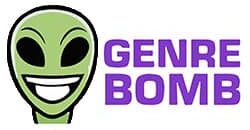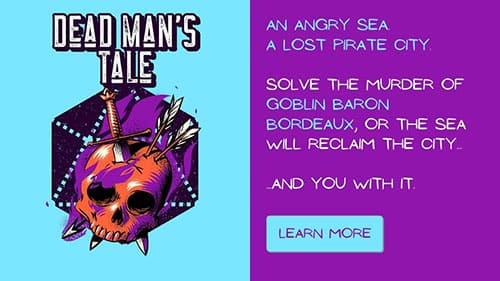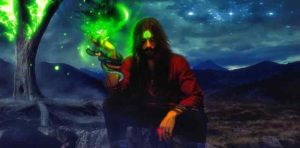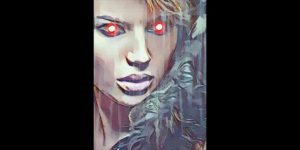Zombies are raised through necromancy in Dungeons and Dragons 5e and Pathfinder 2e, either as mindless minions or a plague-ridden hoard.
These monsters are often used as early-level villains, raised by necromancers as minions or rising from some other magical phenomena. However, they come in a variety of more powerful forms as well, some even capable of magic (zombie beholder). The common bond between these forms is a mindless, animalistic aggression—gore and horror relentlessly pursuing a victim.
With these factors in mind, let’s come up with the essential ingredients for a zombie apocalypse one-shot.
- Build tension and suspense
- Use gore and erratic movement to make zombies scary
- Zombies are most effective as an overwhelming hoard
- Use a variety of zombie monsters in the hoard.
- Necromancer super villain wants to rule the world
- The Underworld is rising
- Try an urban fantasy setting
Build tension and suspense
I like to catch my players off-guard, sending them through a location and surprising them when I can. For a zombie apocalypse storyline, this could be a fantastic way to start the campaign—a slow burn that soon spirals into chaos.
Tension is a tool to build suspense, literally referring to the feeling of excited stress. This occurs when players are uncertain about the path but must move forward anyway. How do we pull this off? We leave out the why and hide the threat—at least at the beginning of the adventure.
We can build tension in a moment, when danger is around the corner, and over the whole storyline, seeking answers to this zombie apocalypse.
Suspense is the unknown area between the immediate situation and the story as a whole. How does one player’s backstory fit with the story overall? We can thread this out over the game, as our players move from one place to another trying to survive. Place clues and hints around for players to examine. This way, we can lead them further into the mystery.
Use gore and erratic movement to make zombies scary
Raise the fear factor of these monsters with solid detail and uncanny behavior—this is the moment for implementing storytelling skills. If we simply refer to a monster as its monster name, our players will more likely think of it as a stat block and not a visceral threat. Describe the zombies as shapes or figures with dead eyes and bloody mouths.
A few gory details you could add in are:
- Dead, grey eyes
- Missing limbs
- Facial/body decay
- Blood smeared somewhere—face, shirt, arms
Now that we have the gory details, we can add strange behavior to bring a sense of eeriness or danger to the zombies. Famously, zombies can be slow and dumb. However, erratic, jerky motions can intensify the threat if they otherwise seem like meat sacks. Plus, it’s just weird. Some zombies could move at faster speeds, such as the fast zombie from Pathfinder.
Related Posts:
Guide to Building a Warlock Undead Patron: DnD 5e
| Guide to Building a Necromancer: DnD 5e
|
Zombies are most effective as an overwhelming horde
Because zombies are dealing with atrophy and rotting ligaments, they aren’t the same kind of enemy as a feral beast or fiend. However, these slow-moving meat bags have immense strength in numbers. This is especially dangerous in a turn-based combat system, where the party could clear the foes on the table only to encounter more.
The first encounter could be a build-up—someone encounters a zombie during an investigation. This moment would be a good time to include creepy, gory details of the figure as it emerges.
Then, the next encounter includes more zombies. Maybe 4 or 5 depending on party size. Now that I have an idea of what these combat encounters might look like, I can push my players with more and more zombies. However, it’s important to remember where the line is—we want to find the right amount of enemies to encourage a tense battle without wiping the party.
Use a variety of zombie monsters in the horde.
In fantasy, zombies can come in any shape and size, whether a zombie dragon, ogre, beholder, giant, or other humanoid. Essentially, any monster can be zombified by adding features that relate to the zombie archetype and subtracting Intelligence scores.
We also have stat block templates for several variants that we could repaint to something similar—such as using the ogre zombie stat block as a giant zombie.
Dungeons and Dragons 5e
For Dungeons and Dragons 5e, we have several usable stat blocks and the Undead Fortitude feature. Undead Fortitude gives the zombie a chance to bounce back to 1 HP when reduced to 0 HP. This check is a Constitution saving throw equal to 5 + damage taken. We could create zombie variants using this Undead Fortitude as the key feature—the feature that makes this monster a zombie.
We also have 3 stat blocks to choose from in the original Monster Manual: zombie, ogre zombie and beholder zombie.
The typical zombie variant is a humanoid at ¼ CR, so these tend to be early-level minions. Anything reasonably human-shaped could use this stat block: goblins, lizard people, fish people, whatever. With a simple slam attack and Undead Fortitude, these zombies will make up most of the swarm. Even when the party does fell an opponent, a roll of the die could keep the zombie on its feet.
Ogre zombies are the next major variant, a hulking tank that could come back to life in the same way. Now, the party has to deal with a much greater physical threat who also has Undead Fortitude. These undead hulks fight with a Morningstar and have a 2 CR. We could use this stat block for other large humanoids: giants, werebears, minotaurs.
Beholder zombies give us an Eye Ray to watch out for, firing a Paralyzing Ray, Fear Ray, Enervation Ray or Disintegration Ray. This variation is less able to be repainted into other forms, but still makes an impressive monster.
Pathfinder 2e Zombies
The zombies in Pathfinder a few variants that explore the zombie trope with fast zombies and plague zombies, while giving size options like a zombie hulk.
Fast zombies can take the fear factor to another level. I’ll still use a horde, probably filled with slow zombies, with a few bursting into a sprint. This should take my players off guard in a fun way, throwing off plans made for slow opponents.
Plague zombies offer the fear of modern viral zombies into this fantasy setting. With Zombie Rot, a player injured by a plague zombie can’t heal until cured of the disease. Within the swarm, these guys can stick out as particularly foul in appearance.
Of course, a zombie hulk or two could make for fantastic mid-game boss fights. These zombies literally fight with hunks of meat and throw corpses as ranged attacks. Large in stature, they can hit multiple opponents with one swing, which counts as 2 attacks for the multiple attack penalty.
Like DnD 5e, it is possible to zombify other creatures by blending in traits from the original monster. I’ll grab traits like the Zombie Rot from the plague zombie and stick it on a giant spider. Or I could make a fast zombie from a beast—something like a zombie cheetah.
Necromancer super villain wants to rule the world—story hook
In a fantasy setting, the zombie apocalypse will likely come from a magic origin—necromantic magic in most cases. However, this necromancer villain is no ordinary wizard. This wizard’s power has to be on another level to bring on an apocalypse.
For this adventure, consider the following elements:
- Begin in a small village, where the threat and tension can grow. This village can act as ground zero for the invasion—where hopefully the party can stop it.
- Grow mystique around this powerful necromancer. Players can uncover this villain’s source of power and backstory.
- Fight through a variety of zombies as the party uncovers the source of evil.
- Find the source of the necromancer’s power: artifact, spellbook, contract with higher power. Give the party a weakness to exploit but make them work to find it.
- Use a nearby castle or ruins as the necromancer’s lair. This location could present an epic, gothic location for a final confrontation.
Related Posts:
Guide to Building an Underground Campaign: DnD 5e
| Guide to Building a Monster Slayer Ranger: DnD 5e
|
The Underworld is rising—story hook
We could also play this campaign without a central villain—more of a natural disaster like modern zombie movies. However, we can still implement magic and the unknown with the zombies’ origins. Can the party find the source of this outbreak and stop it? Or is it already too late?
Consider the following story hooks:
- A cursed item is thrown into a small village well, contaminating the ground and raising the dead.
- Beings from the Shadowfell or Hades are pouring into the players’ world, a rift that must be sealed.
- Something was stolen from Hades’ vault. Now, the forces of the Underworld have been unleashed in retribution. Return the stolen object.
- A wizard college activates an experimental portal that completely backfires. Find the magical pieces to fix the gate while surviving the zombies it generates.
Try an urban fantasy setting
Our zombie setting could be modern in DnD 5e rules, using modern guns, phones and computers. We’ll have magic in this world, an updated fantasy setting with elves, dwarves and the whole nine yards. However, we now can recreate our favorite zombie movies like Dawn of the Dead or Night of the Living Dead in a world of magic.
- Include the tropes of elves, dwarves and magic into a modern world: complete with malls, suburbs and cities.
- Try a mall zombie campaign via Night of the Living Dead. Survive and escape the stronghold without being overrun.
- Move through urban environments—back allies, buildings, courtyards
- Or move through suburban environments—neighborhoods, schools, farms






